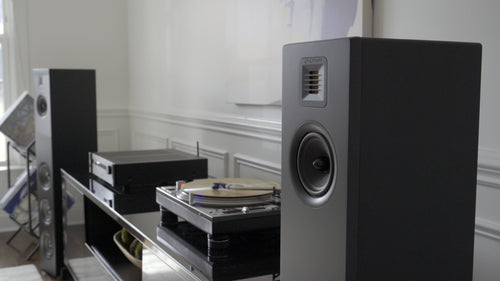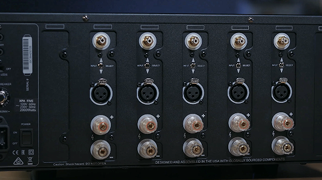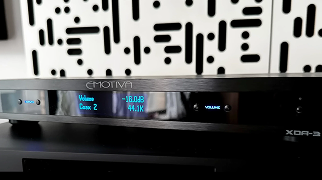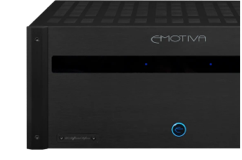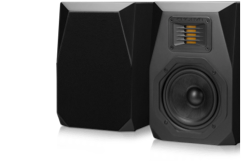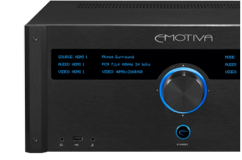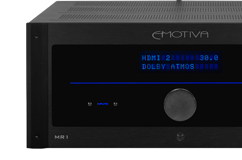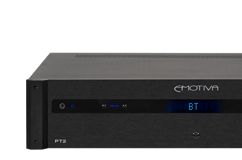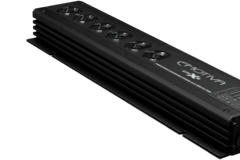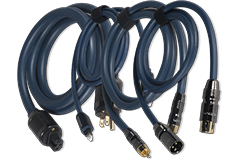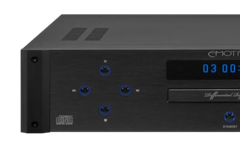
The world of home theater has recently begun to advance at an amazing pace. The eras of videotape, DVDs, and Blu-Rays all lasted a while, but in the past few years alone, we’ve seen several different versions of both 4k UHD video and the HDMI standard.
As a result, the various options have become pretty confusing, and it’s hard to know what equipment you need to take full advantage of the latest and greatest technologies.
But, fear not! Here at Emotiva we know a thing or two about 4k, so to help you make informed decisions, we’ve put together a helpful guide on how to decide what you really need to jump into the world of 4k video.
4k UHD

The biggest difference between Blu-Ray discs and 4k UHD video is the resolution. A new 4k picture has about four times as many pixels as the HD format used on regular Blu-Ray discs, which means that the picture you see is sharper and has more detail - and the larger your screen is, the greater the effect.
Although preferences vary and the topic is hotly debated, many viewers report seeing a clear improvement, and greater sharpness, with screens as small as 50” and more dramatic improvement on larger screens.
HDR

HDR, short for High Dynamic Range, is a new technology that was introduced soon after 4k UHD. While 4k offers an improvement in resolution, HDR offers improvements in dynamic range. In other words, in an HDR image, the bright parts of the picture can be brighter, the darks can be darker, and a wider range of colors is available. The result is a picture with brighter and more saturated colors, with smoother transitions between different colors and shades of grey.
In theory, the technology of HDR will work with any picture resolution, but it is currently only offered as part of the latest 4k UHD discs, streaming video, and equipment.
There are several iterations of HDR, each offering improvements over the previous version, and each of which must be supported by your equipment. The original version was known simply as HDR; this was soon followed by Dynamic HDR. Current types of Dynamic HDR include HDR10+, which is part of the latest standard (as of May 2018), and Dolby Vision, which is proprietary and less widely supported.
Any 4k UHD disc can be played on any 4k monitor or processor, but the version of HDR (and therefore the features and benefits) you get will be limited to the standard every piece of equipment in the signal path supports. For example, original 4k TVs will not support HDR at all, slightly newer models will support regular HDR, and the latest models will usually support Dynamic HDR and sometimes Dolby Vision.
Sometimes you will find that older equipment’s firmware can be upgraded to support newer versions of HDR, but most cannot.
HDMI

“HDMI” describes the signal path between components. It is the most recent standard for transmitting video and audio between different devices. In short: HDMI carries both video and audio between devices over a single cable.
In the old days, there were many types of video signal, each with different benefits and weaknesses - and each using a separate cable. Since then, most equipment has settled on HDMI for video transmission, with only a few modern devices including inputs for other types of legacy video. There is no universal standard for analog or digital audio, so most processors still include a variety of audio inputs and outputs.
If you’re using an app on your TV to view streaming content (like Netflix, Hulu, or HBO Now) directly, all you need to know is what versions of 4k and HDR your monitor and streaming service support - HDMI need not apply.
If your 4k sources include devices besides your TV, like a 4k Blu-Ray player or a cable box, or you have a home theater preamp/processor, then HDMI comes into play.
If you have older equipment with non-HDMI video outputs, you can connect it to a modern processor with the addition of a low-cost video converter.
HDMI also includes a form of copy protection called HDCP. All you need to know about HDCP is this: if you want to be able to view commercial video content, your HDMI connection must support the current version of HDCP. With a few exceptions for unusual system configurations, this shouldn’t be a problem for any components that support current HDMI standards.
It’s important to remember that the video standard you can use is limited by what ALL of the equipment in your signal chain can handle. So, for example, if you want to watch your new disc in 4k HDR, the disc itself, your display, your processor, and the connections between them must all support 4k HDR. If any of the links in the chain don’t support HDR, you will be limited to watching your disc in 4k - without HDR. It should play just fine; it just won’t play in HDR.
There are some ways around this limitation with particular components, but it’s easier to simply ensure that all of your components support what you need, both now and in the future. I your current monitor doesn’t support HDR, you don’t necessarily need a processor that supports HDR now; however, if you buy a non-HDR processor today, you may find yourself replacing it when you upgrade your TV to a model that supports HDR later.
A Note on HDMI Cables:
Customers often ask us whether you need to buy special HDMI cables for 4k video, or upgrade the cables you currently have. This question stems from the fact that there are new HDMI cables specifically rated for 4k video. However, many existing HDMI cables are quite capable of handling 4k video with no problems, and even 4k-rated cables may still have difficulty over very long distances. Therefore, if you’re buying new cables, we recommend purchasing those rated for 4k - but, if you’ve already got cables, then we suggest testing them out before replacing them.
What Standards Do I Really Need To Worry About?

There are a few more complicated aspects of 4k readiness that we haven’t discussed here, including high frame rates and chroma subsampling. These both apply to certain unusual video sources like computers, but don’t have much to do with normal video sources like 4k UHD Blu-Ray discs and cable boxes. Feel free to contact us directly if these questions apply to your setup.
As a general rule, though, here’s what you need to know:
Some helpful background: the latest video technologies - 4k UHD discs and video streaming (which have recently replaced Blu-Ray discs at the forefront) - deliver a 4k UHD picture, otherwise known as 2160p. (Blu-Rays have a resolution of 1080p, also known as full HD.)
First, you’ll want to check the specifications of your 4k UHD TV or projector, as well as your 4k disc player, to see if they support HDR, Dynamic HDR, or Dolby Vision.
If both source devices and your monitor support a particular standard, here are the HDMI versions your pre/pro needs to support in order to take full advantage of all their capabilities:
- HDMI 2.0 supports 4k UHD video – but not HDR
- HDMI 2.0a supports 4k UHD video and HDR – but not Dynamic HDR
- HDMI 2.0b supports 4k UHD, and both HDR and Dynamic HDR
- Dolby Vision is a proprietary version of HDR; HDMI 2.0a and HDMI 2.0b devices may or may not support it (each device should specify)
Looking to get 4k ready? Our Emotiva MC-700 supports HDMI 2.0a on three of its six HDMI inputs, and therefore supports 4k UHD video and HDR.
Our more advanced XMC-1 provides full support for HDMI 2.0b on all of its inputs, including 4k UHD video, HDR, Dynamic HDR, and Dolby Vision. The XMC-1 is also fully modular and upgradable, meaning we plan to upgrade it to support future standards as they are adopted.

The world of home theater has recently begun to advance at an amazing pace. The eras of videotape, DVDs, and Blu-Rays all lasted a while, but in the past few years alone, we’ve seen several different versions of both 4k UHD video and the HDMI standard.
As a result, the various options have become pretty confusing, and it’s hard to know what equipment you need to take full advantage of the latest and greatest technologies.
But, fear not! Here at Emotiva we know a thing or two about 4k, so to help you make informed decisions, we’ve put together a helpful guide on how to decide what you really need to jump into the world of 4k video.
...Share Post


